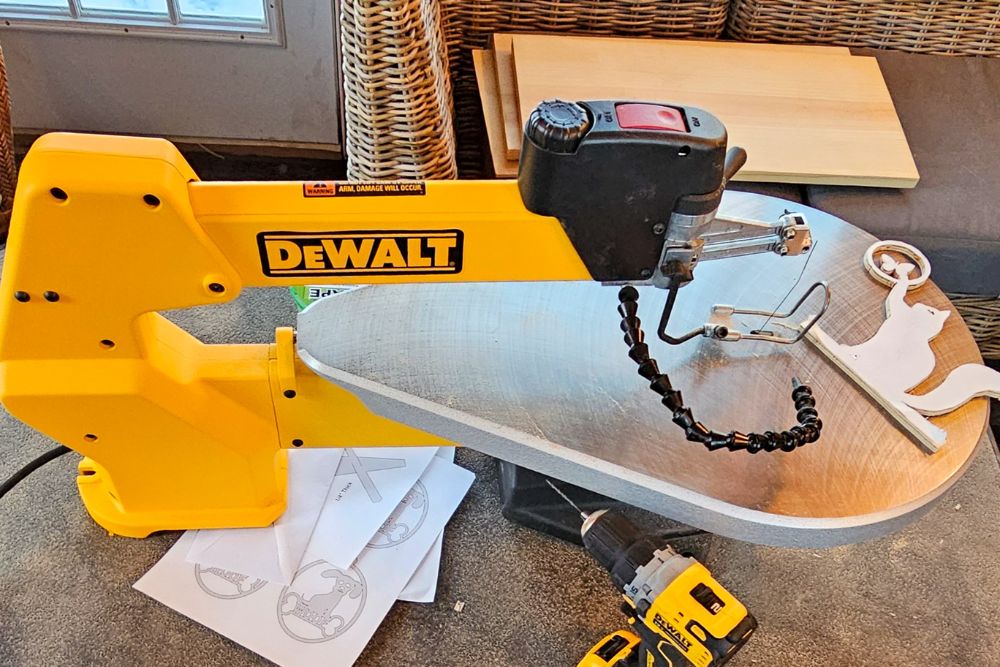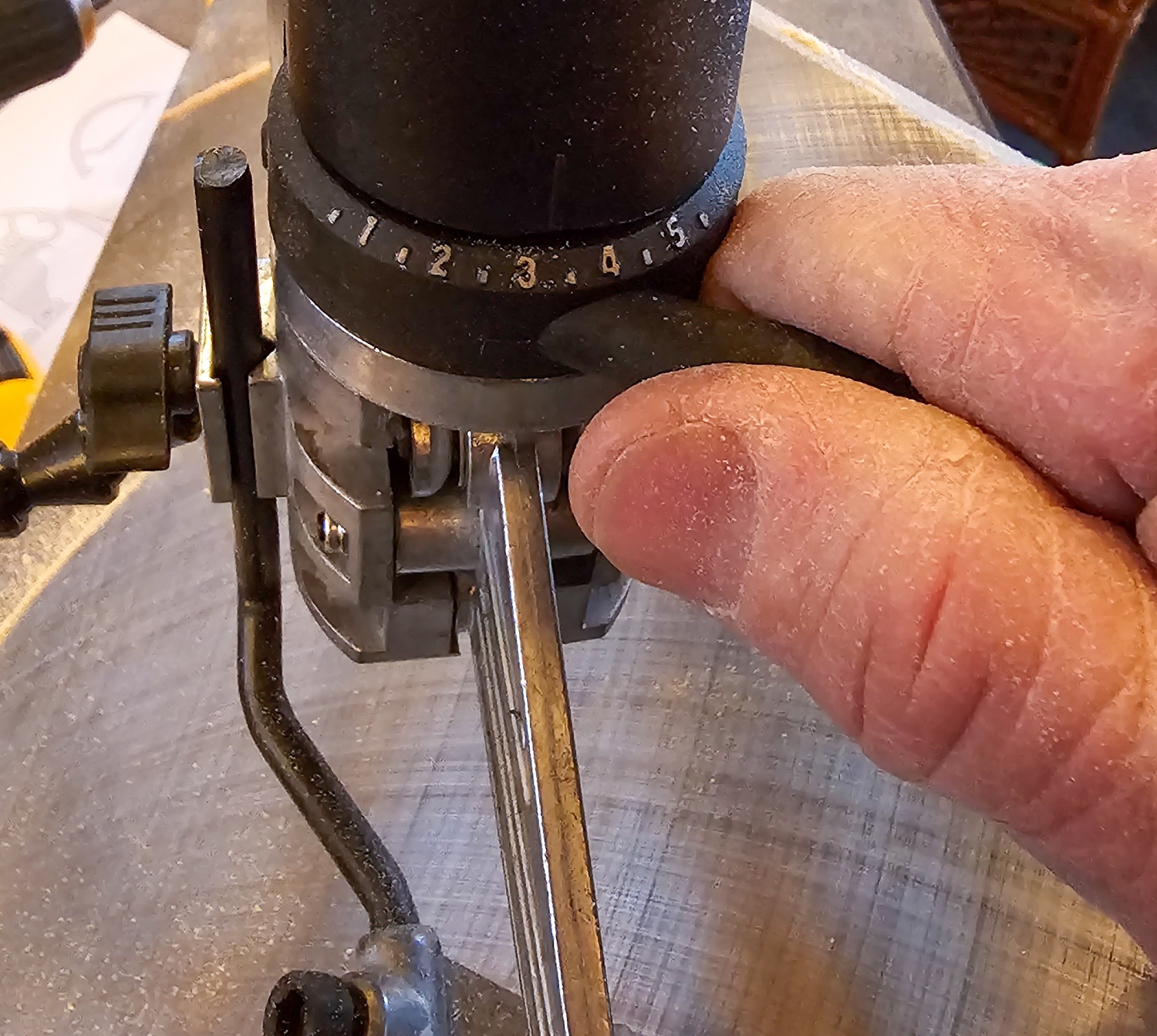We may earn revenue from the products available on this page and participate in affiliate programs. Learn More ›
Precision in fine woodworking depends nearly as much on the tools as the technique, and for artisans and craftspeople, a reliable scroll saw is indispensable. DeWalt is a key player in manufacturing top-notch power tools, and the DeWalt DW788 scroll saw is no exception.
I put the DW788 through its paces in my woodshop, alongside seven other highly rated scroll saws, to see how it would fare. While I’m not as impressively skilled with these saws as some of the master artisans I’ve watched online, I know enough about power tools (and wood) to know the difference between a so-so scroll saw and a top performer.
I carefully researched more than 20 scroll saws and then handpicked eight for in-depth testing in my woodshop. I wasn’t necessarily looking for the most expensive saws but for the ones that performed best in various price and skill ranges. In my quest to determine the best scroll saws for a range of users, the DeWalt DW788 earned its spot as our Best Overall pick. Ahead, learn what happened when I tested this popular scroll saw; find out what I loved and what I wish DeWalt would improve.
DeWalt DW788 Scroll Saw: At a Glance
Rating: 9/10

SPECS
- Model: DW788
- Throat size: 20 inches
- Tool-free blade change? Yes
- Speed type: Variable
- Dust blower? Yes
PROS
- Variable-speed knob offers quick adjusting for working with different wood types and thicknesses
- Smooth cutting—little to no vibration noticed at any speed level or wood type tested
- Dust blower does a good job of keeping dust off the cutting line for visibility
- Accepts quick-change pinless blades to make blade replacement a breeze
CONS
- Blade arm does not hold itself up when making blade changes
- Limited space under table; users with large hands may find it challenging to insert new blades
Get the DeWalt 20-inch scroll saw at:
What is the DeWalt Scroll Saw?
The DeWalt DW788 scroll saw is a top-notch tool for making the kind of cuts necessary to create intricate woodworking projects. DeWalt has equipped the saw with a double parallel-link arm design for increased accuracy, and speed adjustments are easy to make using a control knob located on the front upper arm.
Powered by a 1.3 amp motor, the DW788 provides variable blade speeds from 400 to 1750 strokes per minute, making it versatile for different types and thicknesses of wood. Its cast-iron table tilts 45 degrees in both directions for cutting precise bevels.
As with most of today’s newer scroll saws, the DW788 features quick blade changes and uses pinless blades. Long-time scroll saw users will remember needing to use wrenches when replacing blades. With the DW788, blade replacement is as easy as twisting a thumb screw to loosen the current blade, inserting a new blade, and then retightening the thumbscrew.

Seamless Setup
The DW788 requires some assembly, but not much. The main part of the saw was already put together right out of the box; all I had to do was install the steel table, attach the flexible blower port, and insert the blade. Installing the table required positioning a steel pin in the base arm, toward the back, and then sliding the table into place. When the table was correctly aligned, the pin slid into a corresponding hole in the table. Then I secured the setup by inserting a couple of bolts, which were included along with the hex saw needed to tighten them.
The blade was simple to install; it’s held in place by a clamp below the table’s surface and also attaches to the sawing arm above via thumbscrews. I slid the blade into the bottom clamp and used the thumbscrew to tighten it. The only downside I experienced (an issue shared with several of the saws I tested) was having to scrunch down to see the underside of the table to find where to position the bottom of the blade. This might only be temporary, though, because once I became more familiar with the tool, I could almost (not quite) do it by feel. To be on the safe side, be sure to unplug the saw before changing blades.
Then came the part I found pretty challenging: attaching the flexible blower hose to the blower port on the side of the machine. Pushing as hard as I could with my hands didn’t work—it simply wouldn’t snap on. I gave in and fetched my hair dryer, then heated the end of the hose until it was soft enough to slip it securely over the blower port. Mission accomplished!
Precise and Accurate, But Dependent on User Skill
The DeWalt DW788 scroll saw excels in three critical performance areas: vibration, blade-cutting speed, and the ability to make beveled cuts. The saw exhibited very low vibration in testing, providing the stability I wanted for cutting different types of wood. It comes with holes to bolt it down to a workbench, which I did, but even without bolting it, at 65.7 pounds, this is a beefy saw that won’t slide around when working.
The saw makes beveled cuts, angling up to 45 degrees in both directions. This is a big plus for users who don’t want to turn their projects upside down to cut an angle in the opposite direction—which is necessary on saws that bevel only in one direction.
Overall, the DW788 offers everything most users will need for precision cutting, but it’s crucial to note that the accuracy level of all scroll saws is intricately linked to the user’s skill. In my case, having not used a scroll saw for several years, the initial tests revealed challenges in keeping the blade on the cut line. As I reacquainted myself with the techniques and learned the machine, the scroll saw delivered highly precise and accurate cuts.

User-Friendly, to a Degree
I found the DW488 to be very user-friendly, but a few tweaks could make it even better. The ability to adjust the speed makes it a good option for both beginners who want to start out slow and experts who need both high and low blade speeds.
The quick-release blade makes it an excellent choice for users wanting to create fretwork (patterns with intricate designs that require cutting from the center rather than an edge). With just a twist of the upper blade screw, I was able to release the top of the blade and thread it through holes I’d predrilled in my wood to cut fretwork. Once the blade was threaded, it was easy to reconnect it at the top and cut the shapes. Soon, I became so familiar with the process that it didn’t require much thinking.
But while the blade-threading process is simple, DeWalt could improve the saw by creating a lock on the upper arm that holds it aloft when the user threads the blade through a fretwork pattern. As it was, the heavy arm kept wanting to drop, so I ultimately decided to place a board under the arm to brace it up while I threaded the blade through the wood. It’s not a functional problem—just an annoying side issue.
The blower hose is great: It offers just the right amount of air pressure to move the dust off the cutline so I could clearly see the line while sawing. The addition of a directional light, however, would also be very helpful for illuminating the cutline and improving the overall level of craftsmanship.

Is the DeWalt scroll saw right for you?
The DeWalt DW788 scroll saw is a powerful tool for creating intricate woodworking projects. Its low vibration, variable speeds, and ability to make beveled cuts in both directions make it a good option for beginners and advanced scroll saw enthusiasts.
However, the DW788’s weight (65.7 pounds) may be problematic for those wanting portability. Beginners, in particular, might find the weight cumbersome if they anticipate moving the saw frequently.
The DW788 requires minimal assembly and offers user-friendly features like quick blade changes and effective dust clearing with a flexible blower hose. It would benefit from a locking mechanism that held the arm up when the user threaded the blade through fretwork, but that’s far from a deal-breaker.
The saw is competitively priced at around $400, and it lives up to DeWalt’s reputation for producing top-notch power tools. I believe that this saw deserves a permanent spot in a woodworking shop.

Where to Buy the DeWalt DW788 Scroll Saw
Get the DeWalt 20-inch scroll saw at:
Meet the Tester
Glenda Taylor is a product tester and writer specializing in construction, remodeling, and woodworking. She and her husband own a general contracting company, and Taylor is experienced in both residential and commercial building applications. She tests a wide range of power tools as well as other home improvement, household, and lawn-and-garden products.


